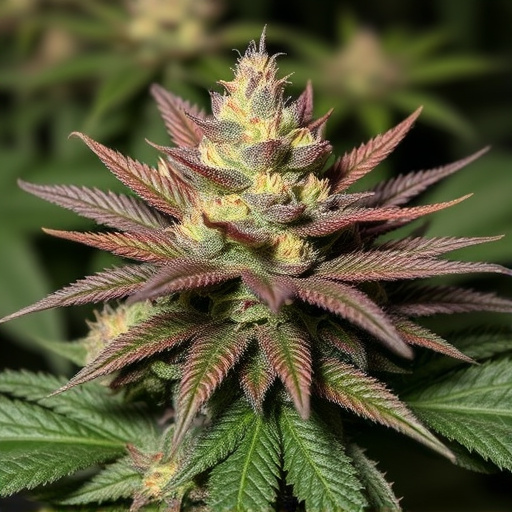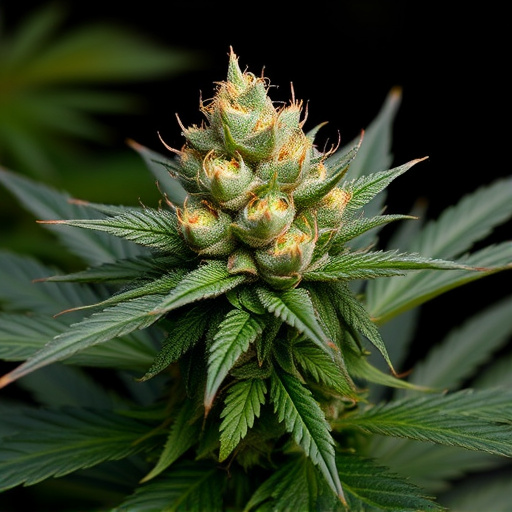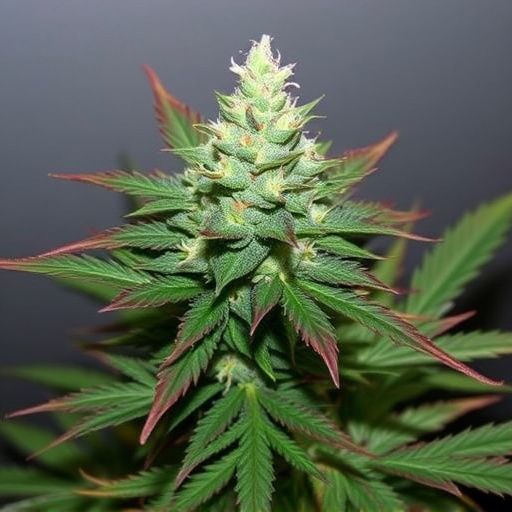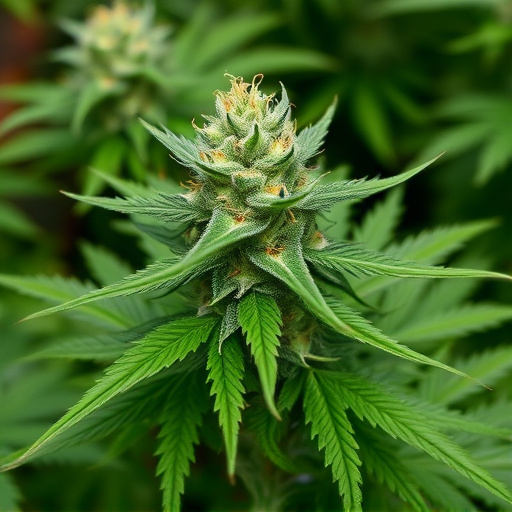The distinctive aromas of top cannabis strains result from complex genetic and terpene profiles, making each strain unique. Terpenes, like essential oils in other plants, influence smell, flavor, and potential therapeutic effects. Genes encoding terpene synthesis enzymes and variations in flower density contribute to aroma development. Understanding these dynamics allows cultivators to breed desired aromatic characteristics and consumers to make informed choices based on olfactory experiences and specific therapeutic benefits.
Unraveling the enigmatic aroma of cannabis is a captivating journey, with countless factors weaving together to create its distinctive scent. From the genetic makeup of each strain to the intricate dance of cultivation and environmental conditions, every element plays a pivotal role in shaping the sensory experience. This article delves into the multifaceted world of cannabis aroma, exploring the genetics and terpene profiles that define top strains, the influence of cultivation practices, and the fascinating interplay between our senses and individual preferences.
- Genetics and Terpene Profiles
- – The role of cannabis genetics in aroma development
- – Terpenes: Chemical compounds contributing to scent and flavor
Genetics and Terpene Profiles

Cannabis aroma, or its distinctive smell, is a complex interplay of various factors, with genetics and terpene profiles playing a pivotal role. Each cannabis strain possesses a unique genetic makeup that contributes to its aromatic profile. Certain genetic traits can enhance or alter the production of specific terpenes, resulting in diverse scents. Terpenes are aromatic compounds naturally occurring in cannabis, similar to essential oils in other plants. They not only give cannabis its characteristic smell but also play a significant role in its flavor and potential therapeutic effects.
When considering the top cannabis strains, their terpene profiles are often what set them apart. Different terpenes create diverse olfactory experiences, ranging from citrusy and floral notes to earthy and piney scents. For instance, myrcene is commonly associated with earthy and musky aromas, while limonene offers a bright and refreshing citrusy twist. Understanding these genetic and terpene dynamics allows cannabis enthusiasts and cultivators to explore the vast array of scents and potentially unlock specific therapeutic benefits that align with their preferences.
– The role of cannabis genetics in aroma development
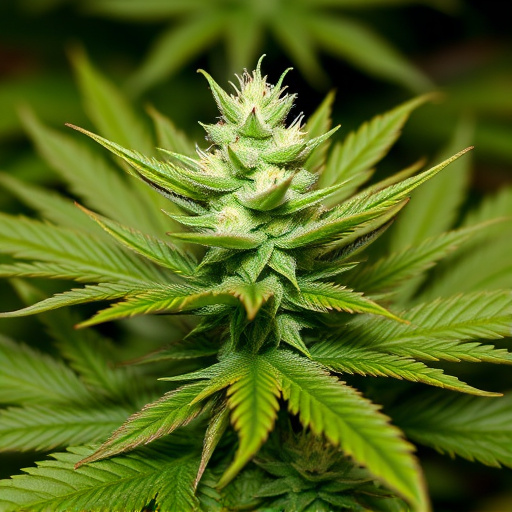
Cannabis genetics play a pivotal role in determining the aroma development of this diverse plant. Each strain, or variety, of cannabis has its own unique genetic makeup, which influences the compounds and terpenes produced. These chemical profiles are responsible for the distinct scents associated with different strains. For instance, some top cannabis strains known for their robust aromas include Northern Lights, known for its earthy and piney notes, and Blue Dream, celebrated for its sweet and fruity fragrance.
The genetic contributions to aroma are multifaceted. Certain genes encode for specific enzymes involved in the synthesis of terpenes, which are aromatic compounds that interact with cannabinoids to create complex scents. Additionally, genetic variations can affect the density and structure of cannabis flowers, impacting how these volatile compounds are released and perceived by our senses. Understanding these genetic factors is crucial for cultivators aiming to breed top cannabis strains with desirable aromas.
– Terpenes: Chemical compounds contributing to scent and flavor
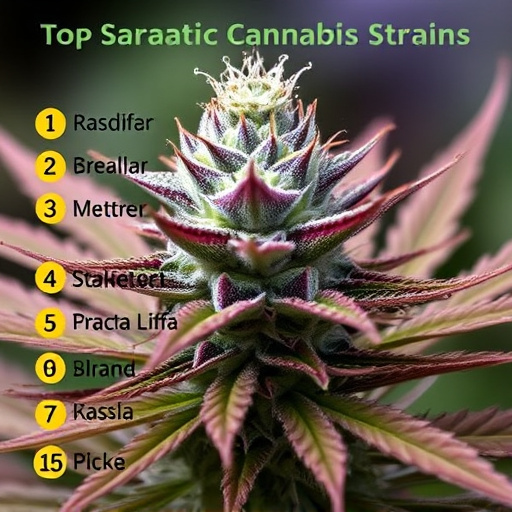
Terpenes play a pivotal role in shaping the distinctive aroma and flavor profiles associated with cannabis, making them an essential aspect to consider when exploring top cannabis strains. These chemical compounds, naturally occurring in the plant, contribute significantly to the unique scents we associate with different varieties. The diverse range of terpenes found in cannabis includes myrcene, limonene, pinene, and linalool, each imparting specific olfactory notes that can vary from earthy and woody to citrusy and floral.
The interplay between terpenes and cannabinoids is complex. Cannabinoids like THC and CBD are well-known for their psychological and therapeutic effects, but terpenes also influence these experiences. For instance, myrcene, often dominant in many strains, is known for its relaxing and sedative properties, while limonene offers a refreshing citrusy aroma and is linked to mood elevation. Understanding the terpene composition of various top cannabis strains allows consumers to make informed choices based on their desired sensory experience and potential therapeutic benefits.
The distinctive aroma of cannabis is a delicate interplay between its genetic makeup and the chemical compounds it produces, particularly terpenes. Understanding these factors is key to appreciating the diverse scents and flavors among top cannabis strains. By delving into genetics and terpene profiles, cultivators can craft unique aromas that cater to various preferences, enhancing the overall experience for cannabis enthusiasts.







